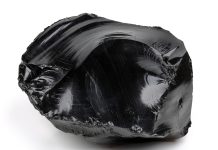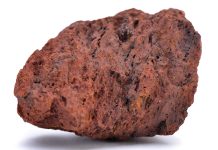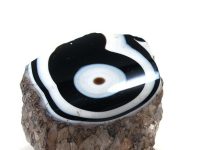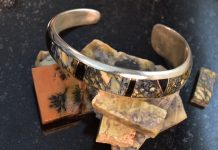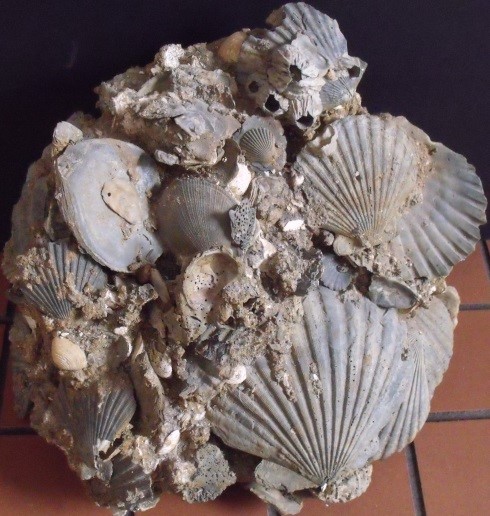
State fossils, which began in 1974 with the saber-toothed cat, Smilodon californicus, in California, are a way for states to highlight the prehistoric creatures that once roamed or swam in different regions of America. After the first state fossil was named, these designations took off from there. In the 1980s, states began in earnest to add fossils to their list of designated symbols. In many cases, school teachers and students suggested the state fossils. These fossils are not necessarily the most common finds in the state, but they are ostensibly the most famous or well-known.
Below is a comprehensive list of official state fossils, organized alphabetically. A good list to keep on hand!
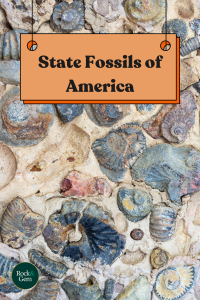
State Fossils from A to Z
Alabama
In 1984, Alabama designated Basilosaurus cetoides, a prehistoric whale of the Eocene.
Alaska
In 1986, Alaska designated Mammuthus primigenius, the Pleistocene woolly mammoth.
Arizona
In 1988, Arizona designated Araucarioxylon arizonicum, a petrified wood of the Triassic.
California
The Pleistocene Smilodon californicus is the famous saber-toothed cat generally found in the LaBrea Tar Pits.
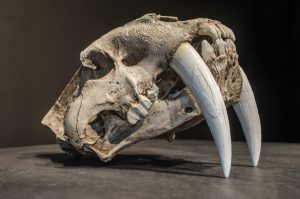
Colorado
In 1982, Colorado designated the Jurassic spiked tail Stegosaurus stenops.
Connecticut
Because of the large number of dinosaur trackways discovered there, in 1991 Connecticut designated Eubrontes giganteus, a dinosaur footprint.
Delaware
In 1996, Delaware designated the Cretaceous Belemnitella americana.
Florida
The Florida state fossil is pending approval — the Eocene echnoid, Eupatagus antillarium, AKA a Sea Biscuit. Florida’s agatized coral, the official state stone, is also considered a fossil.
Georgia
In 1976, Georgia designated the Cretaceous to Miocene shark tooth.
Idaho
In 1988, Idaho designated Equus simplicidens, a Pliocene-aged horse.
Illinois
In 1989, Illinois designated the Pennsylvanian soft-bodied “Tully Monster,” Tullimonstrum gregarium. It was originally found in 1958 by Francis Tully.
Kentucky
In 1986, Kentucky adopted the Ordovician to Mississippian brachiopods.
Louisiana
In 1976, Louisiana designated the Oligocene petrified palm wood Palmoxylon.
Maine
In 1985, Maine designated the Devonian vascular plant Pertica quadrifaria. The plants were first discovered in the Trout Valley Formation in 1968 in Baxter State Park.
Maryland
In 1984, Maryland designated the Ecphora quadrocosta a Miocene predatory snail, but there has been a name change. It is now known as Ecphora gardnerae.
Massachusetts
There have been so many different types of Jurassic dinosaur tracks found in Massachusetts that the legislature designated dinosaur tracks in 1980.
Michigan
In 2002, Michigan designated the Mamut Americanum, the Mastodon. The popular “Petoskey Stone” polished coral is the state stone.
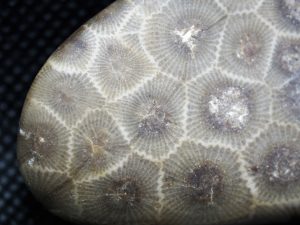
Mississippi
In 1981, Mississippi designated two Eocene whales – Basilosaurus cetoides and Zygorhiza kochii.
Missouri
In 1989, Missouri designated the Pennsylvanian age crinoid Delocrinus amissouriensis.
Montana
The Cretaceous duckbilled dinosaur Maiasaura peeblesorum was designated in 1985.
Nebraska
Designated in 1967, Pleistocene Mammoths, Archidskodon imperator have been found in nearly every county.
Nevada
Designated in 1977, the Triassic Ichtyosaur marine predatory reptile called Shonisaurus popularis was originally found in 1928.
New Jersey
Designated in 1991, the Cretaceous Hadrosaurus foulkii was originally unearthed in 1858 and was the first mounted dinosaur anywhere in the world in 1868.
New Mexico
Discovered in 1875, New Mexico has the Coelophysis bauri as the state fossil.
New York
The rare Silurian Sea Scorpion Eurypterus remipes was designated in 1984.
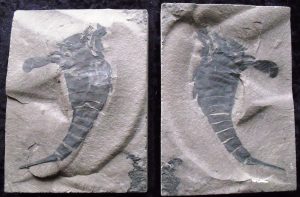
North Carolina
In 2013, North Carolina designated the Carcharadon Megalodon tooth.
North Dakota
In 1967, the Paleocene Teredo petrified wood became the state fossil.
Ohio
In 1985 Ohio designated the Ordovician invertebrate Isotelus maximus trilobite. In 2020, the Devonian Placoderm fish Dunkleosteus terrelli became the state vertebrate fossil.
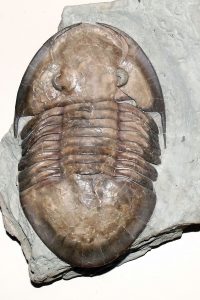
Oklahoma
In 2000, the Jurassic therapod dinosaur Saurophaganax maximus was designated state fossil and state dinosaur in 2006.
Oregon
The Miocene conifer leaf Metasequoia, also called “Dawn Redwood,” was designated in 2005.
Pennsylvania
In 1988, the Devonian trilobite Phacops rana became the state fossil.
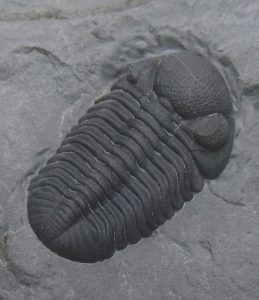
South Carolina
In 2014, the Columbian Mammoth Mammuthus columbi was designated.
South Dakota
In 1988, the Cretaceous three-horned Triceratops horridus ousted the Mesozoic Cycad plant as state fossil.
Tennessee
In 1998, Tennessee designated the Cretaceous Pterotrigonia thoracica bivalve.
Texas
The state dinosaur Paluxysaurus jonesi was designated in 2009. The state stone is an Oligocene palm wood fossil.
Utah
The Jurassic predator Allosaurus fragilis was designated state fossil in 1988 and state dinosaur in 2018.
Vermont
The Pleistocene Beluga whale called Delphinapterus leucas is the state marine fossil. It was originally found in 1849 over 150 miles from the ocean. In 2014 the act was amended to include the state terrestrial fossil, Mammuthus primigenius.
Virginia
In 1993, the Miocene to Pliocene bivalve scallop, Chesapecten jeffersonius was named.
Washington
In 1998, the Pleistocene Mammuthus columbi mammoth was designated state fossil and in 1975, petrified wood became the state gem.
West Virginia
The famous giant ground sloth Megalonyx jeffersoni became the state fossil in 2008. The fossil Mississippian coral is named the state gem.
Wisconsin
In 1985, the Ordovician to Silurian age Calymene celebra trilobite was named.
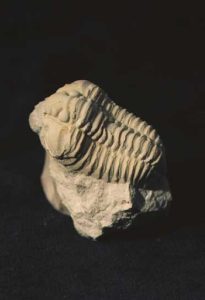
Wyoming
The Herring-like, Eocene age Knightia eocaena fossil fish was designated state fossil in 1987 and in 1994, Cretaceous Triceratops horridus was designated state dinosaur.
Note: In Washington D.C., a single vertebra from the cretaceous, Capitalsaurus, was discovered in 1898 while doing sewer work. In 1998 it was designated the District of Columbia’s state fossil.
Conclusion
State fossils offer a glimpse into prehistoric creatures that once roamed or swam across different regions of the United States. They serve as both scientific treasures and educational tools to help preserve history and inspire future generations of paleontologists and fossil enthusiasts.
This story about state fossils previously appeared in Rock & Gem magazine. Click here to subscribe. Story by Joseph J. “PaleoJoe” Kchodl.



